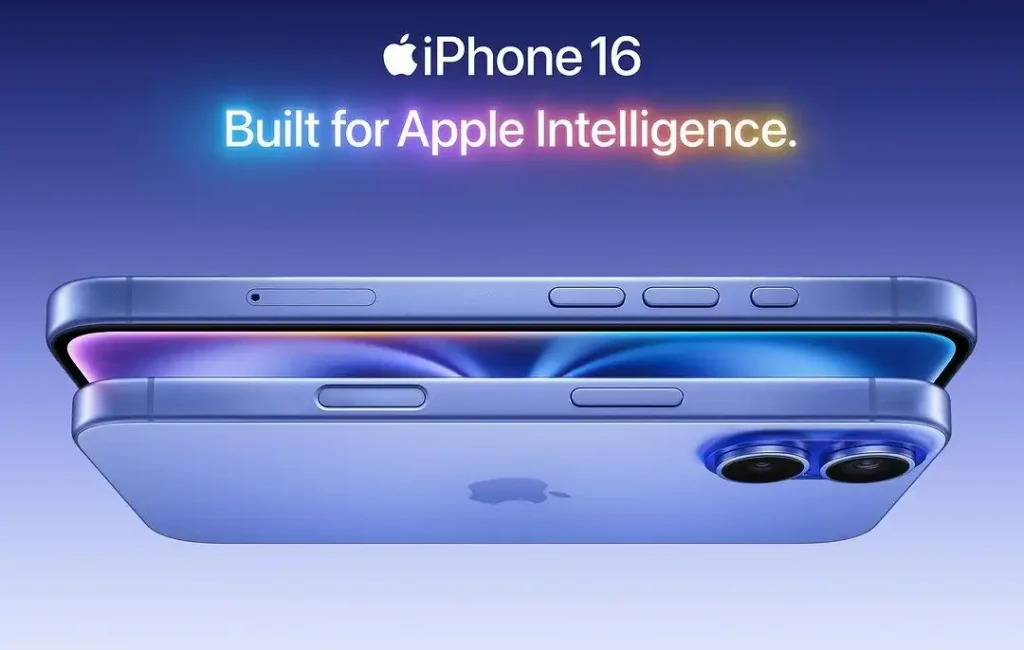Table of Contents
Apple aficionados are always searching Cupertino for the next great thing, and with the iPhone 16’s recent release, everyone’s wondering if they should update. Though Apple has included various adjustments and improvements that could just entice you to switch, on the surface the variations between the iPhone 15 vs iPhone 16 might not appear significant. Let’s explore the main variations from performance enhancements to fresh photography capabilities and even a few surprises to assist you choose if it’s worth upgrading to the iPhone 16.
Apple 15 vs Apple 16: Design and Display

The iPhone 15 and iPhone 16 seem to have not too many variations at first look. Both systems have a 2,556 x 1,179 pixel 2.1-inch Super Retina XDR OLED display. Both phones have 2,000 nits of peak brightness for outdoor usage, hence the brightness levels also stay the same. Though it keeps the same display size and quality, the iPhone 16 has a more robust Ceramic Shield cover glass—which Apple claims to be the hardest on the market.
Although the iPhone 16 keeps the same 60Hz refresh rate as the iPhone 15, there is a little change in appearance even if display technology is not much improved. The vertical camera orientation of the iPhone 16, which deviates from the diagonal configuration of previous generations, is the most clear difference. And for those who value customizable buttons, the iPhone 16 replaces the conventional Mute switch with the Action Button, a capability long reserved for Pro models. Users of this button may designate a range of activities, like activating shortcuts or the flashlight.
Apple 15 vs Apple 16: Camera update

Though the iPhone 16 adds some fascinating new capabilities, both the iPhone 15 and iPhone 16 have a 48MP primary camera and a 12MP ultra-wide lens. For example, the iPhone 16 has macro photography—formerly only seen on Pro models—which lets users capture amazing close-up images with breathtaking clarity. The ability to record spatial images and videos—a new media dimension destined to appeal to both producers and casual users—adds even another great feature.
An anti-reflective lens coating also helps the iPhone 16 enhance picture quality in bright circumstances and aid in reducing glare. The iPhone 16 supports 4K Dolby Vision recording and adds spatial audio capability to improve movie playback for aficionados. Should you be committed to filmmaking or photography, these minor camera changes might make the iPhone 16 a worthy purchase.
Performance: A18 Chip vs. A16 Bionic

The leap in processing power between the iPhone 15 and iPhone 16 is perhaps one of their most obvious variations. Apple’s newest A18 processor drives the iPhone 16, therefore it skips over the A17 completely. Built on a 3-nanometer technology, this new chip generates higher speed and efficiency. Although utilizing 30% less power, the 6-core CPU of the A18 chip provides 30% quicker performance than the A16 Bionic chip of the iPhone 15, hence improving energy economy.
With a 40% speed boost, the A18 chip’s GPU is another highlight for gamers, creatives, or anybody else depending on their phone for hard chores like photogrammetry or video editing. It also brings hardware-accelerated ray tracing, which improves gaming experiences by including more realistic lighting and shadows. The iPhone 16 guarantees better performance across the board whether your activities include gaming, multitasking, or simply utilizing daily applications.
Battery Capacity
When thinking about an update, battery life usually plays a major role; hence, here the iPhone 16 offers a little increase over the iPhone 15. Although the iPhone 15 offers up to 20 hours of video playback, the iPhone 16 expands that to 22 hours. Similar fluctuations in audio playing follow from 75 hours on the iPhone 15 to 80 hours on the iPhone 16.
Regarding charging, both phones allow MagSafe, Qi2, and Qi wireless charging. For individuals who are always on the move, the iPhone 16 is an excellent choice because it charges faster—reaching 50% power in only 30 minutes—and uses a 30W adapter to do this.
New Buttons and Features

The Action Button, which replaces the Mute Switch seen on the iPhone 15 and older versions, marks one of the most obvious physical changes to the iPhone 16. Customizing this button will allow it to do a variety of chores, from turning on the camera to launching shortcuts to turning on accessibility tools. For consumers who like customizing their smartphones, this is a great feature.
Just behind the Power button, another neat new feature is the Camera Control button. With just a simple swipe, this button provides you rapid access to camera settings, therefore facilitating zoom in and out or lens switching. If you often use the camera on your iPhone, this function might save you time and enable even more easy shooting of the ideal photo.
Software
Though the iPhone 16 comes pre-installed, both phones may run iOS 18. Users of the iPhone 15 will have to change their phones to iOS 18, which offers various fresh capabilities like Apple Intelligence, a generative artificial intelligence system meant to produce content and enable deeper Siri interactions. Although both phones will enable these functionalities, the iPhone 16 is better suited for consumers wishing to fully use these powers as it was built with AI in mind.
Pricing
Regarding price, the iPhone 16 begins at $799 while the iPhone 15 is sold for a cheaper beginning price of $699. Though both versions have many storage choices, the price difference still exists. The iPhone 15 still has excellent value if you’re on a budget and don’t mind excluding some of the fresh capabilities. For those who desire the newest technology, better speed, and more customizing choices, however, the additional $100 for the iPhone 16 might be rather valuable.
Verdict: Should You Upgrade?
Should your current iPhone 15 satisfy you, the iPhone 16 may not have enough innovative capabilities to warrant a purchase. The design is still much the same, and while the A18 processor offers an amazing performance increase, casual users may not notice any daily change. The iPhone 16 might be a good fit, however, if you’re ready for an update, desire improved performance, or find great excitement about the new Action Button and camera advancements. In the end, your own requirements define the choice. The iPhone 16 meets your needs in speed, customizing, and camera enhancements if they are top priorities. For others, the wiser action might be hanging onto the iPhone 15 for another year.
Also Read:

